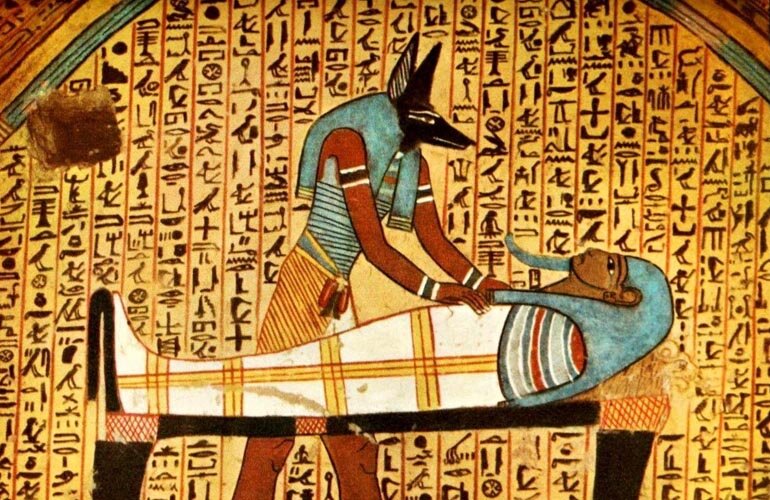Anubis and the Mummies
/Ever wonder why Egyptians were known to mummify those who had died and used complex techniques to preserve the bodies very effectively? Well, here’s the deal — turns out, it was all to appear more appealing to Anubis: God of the dead. Egyptians would use herbs and plants to smell “pure” to Anubis who was said to sniff the mummies and then lead them to the afterlife if he deemed them worthy. Egyptians also believed that only those who were recognizable after death would be accepted into paradise which created the need for mummification.
Anubis and a mummy - source
Was everyone mummified?
No, as one might expect, it was a costly procedure that was unobtainable for most people in Ancient Egypt. Only pharaohs and the very wealthy such as nobles were able to go through the process of mummification. Pharaohs were put in tombs once mummified, often buried with jewels and amulets within their linen wrappings — believing that it’d be taken into the afterlife with them.
How was it done?
embalmers and a mummy - source
It took approximately 70 days to complete and was done by priests who worked as embalmers (aka the art and science of preserving human remains). The chief embalmer would wear a mask of Anubis, solidifying the bond between Anubis and death.
In order to preserve the body as best as possible, the priests removed any easily decayable internal parts of the body such as the brain and organs. They would leave the heart in place, believing that it was the center of someone’s being.
Once finished with the organs, they would then bury them alongside the body or in later burials, would treat the organs, wrap them, and place them gently back inside the body.
After this, they would remove all moisture from the body, doing so with a special dehydrating salt.
The salt would leave the body in quite a creepy state so to make it appear more lifelike, the priests would then stuff the sunken parts of the body with linen and add fake eyeballs. Lastly, they wrapped the whole body in bandages which was quite the task because they’d often wrap each finger and toe separately before wrapping the entire body part.
Does mummification still happen in Egypt?
Egyptians stopped mummification somewhere between the 4th and 7th century AD. During this time, many Egyptians became Christians and gradually gave up the ancient religious beliefs that made them do it in the first place.
For a more detailed look at mummification, visit A Step by Step guide to Egyptian Mummification
Spela Sraka
Spela is a second-year student in the Professional Writing program at Algonquin College. She enjoys writing very much, however, she also finds amusement in drawing, video editing, and gaming.



